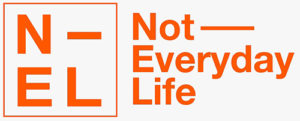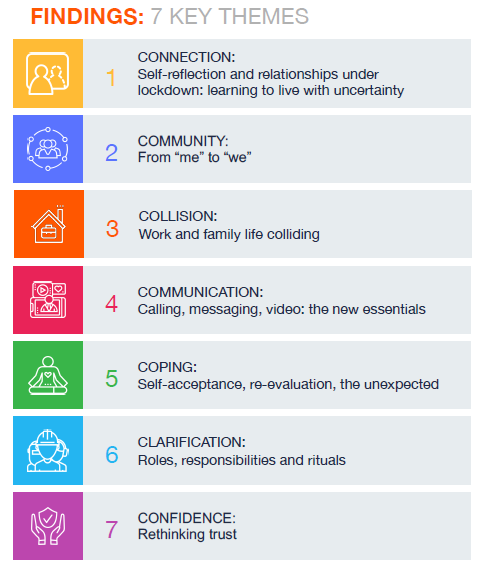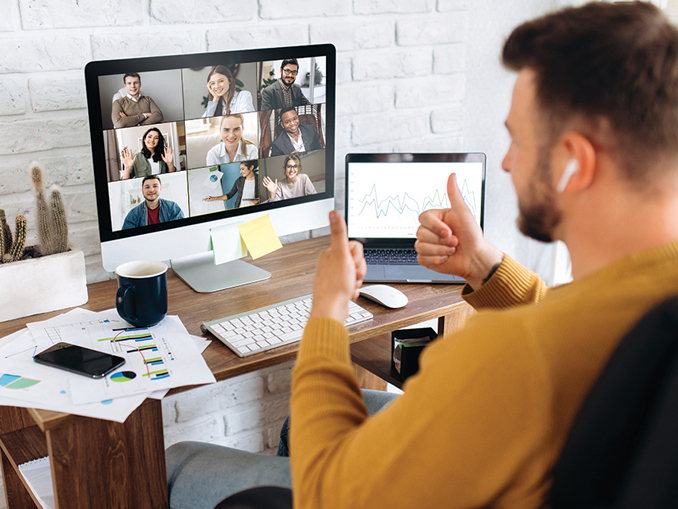 In early March of this year, while the COVID-19 pandemic was starting to take hold, a special project spread exponentially. Born out of the desire to get answers, Not Everyday Life (NEL) took on a life of its own thanks to personal and social connections. The community rallied around the research, producing contributions and questions, and making sense of what was happening quite rapidly. This success showed that quality control does not need hierarchical control. Democratic research is possible and enjoyable. The numbers and the output so far are a living proof of this.
In early March of this year, while the COVID-19 pandemic was starting to take hold, a special project spread exponentially. Born out of the desire to get answers, Not Everyday Life (NEL) took on a life of its own thanks to personal and social connections. The community rallied around the research, producing contributions and questions, and making sense of what was happening quite rapidly. This success showed that quality control does not need hierarchical control. Democratic research is possible and enjoyable. The numbers and the output so far are a living proof of this.
In the Beginning, There Was… a Post
What happens if one researcher posts an appeal on LinkedIn, inviting his connections to conduct interviews to grasp the new reality of the novel virus for consumers?
In this case, it was the start of a project—Not Everyday Life—that rapidly and unexpectedly took on a life of its own. While everyone who registered was busy carrying out interviews to submit, a completely new form of working together in qualitative research was evolving.
It was the lockdown, and the unimaginable new reality, that prompted Siamack Salari to test an idea with a few close friends on LinkedIn.
“I started a project called ‘Not Everyday Life,’” said Siamack. “It’s a crowdsourced/owned exploration of changing behaviors and attitudes at this point in time, but most importantly tries to understand which behaviors and attitudes will stick in a post-pandemic world. This isn’t my gig; it belongs to all of us.”
To make the outputs consistent, Siamack proposed the following topics to explore:
Topic 1: How are people coping today (including in cultural, socio-economic, regional, and religious contexts)?
Topic 2: What behaviors and attitudes might stick in a post-pandemic world?
This topic was more challenging because it was not a question to be asked—rather more about understanding to be disentangled.
This initiative was open to anyone and everyone who wanted to participate; no conditions and no credentials were requested for taking part. Anyone could join as long as their participants were a connection at least three times removed from them and they could produce a report based on three sets of calls, over a week, to the same person.
The rules were deceptively simple: hand in a report and gain access to everybody else’s reports in return. The additional twist—anyone who joined could also decide to contribute to the ensuing sensemaking process or just gain access to the raw data through participation.
A Story Like No Other
Thirty days after the original post, the NEL project attracted more than 900 people from all over the world. We have conducted and transcribed more than 250 interviews in thirty-eight countries, covering all aspects of life under lockdown, from cultural adaptations to fears and hopes for the future.
A website also had to be fast-tracked over the first weekend after the idea was floated on LinkedIn. Siamack simply could not manage the influx of emails requesting registration details.
Soon after, Siamack created a Slack group for those who wanted to help with sensemaking, which grew from seven to ninety people in twenty days. Many more kept contributing to the research to use the outputs for themselves. Twitter, LinkedIn, and Facebook accounts were created in quick succession to build on the attention the project had attracted.
In addition to the agency people who, for the first time, were working alongside their own clients to capture interviews and add meaning to them, marketing and management students started applying to NEL for virtual internships. Their mandatory internships had collapsed due to the COVID-19 crisis and with reports pouring in at the rate of fifteen to twenty a day, we knew we could use all the help we could get.
Ethnographers, semioticians, cultural strategists, corporate social innovators, brand strategists, and qualitative researchers all make up the NEL community. They range from directors of household brands to trainees from the smallest boutique agencies, and everyone in between. Slack has become our virtual company. With dozens of thematic channels in lieu of departments, we collectively look after everything, from regional sensemaking to social media posts. This new entity sprang from nothing to a thriving community spread over cultures in fourteen different time zones, thus working 24/7. At the time of this writing we have completed seven regional workshops to begin the process of extracting meaning and gaining understanding to share publicly.
No Single Author: The Story that Writes Itself
What drives everyone to contribute? The most important reason may be the refreshing realization that we have no clients to please, no baked-in objectives, no single agency with clients to keep engaged. We are free to decide which learnings float our collective boat. We can also follow up in subsequent phases with the participants where possible, allowing us to track participants longitudinally.
Another reason why we hit one thousand registered contributors, with twenty new registrations a day, is that they are able to use the pool of data for their own benefit. We do not care if they financially benefit as individuals or organizations from the pool of data, as long as they are transparent with the source material.
In the absence of commercial objectives or corporate hierarchies, people quickly found ways to self-organize. Individuals from different continents are working together and those most passionate about leading channels have percolated to the top. We are still figuring out and streamlining our systems and processes, but in just thirty days NEL became a living, breathing organism with a dynamic of its own.
What Have We Been Exploring?
Once we started talking to people and made clear that we do not have any marketing-driven agenda, they opened up. They let us into their homes, sent us visuals, described what was happening, and also let us into their lives, talking about what it meant to them.
We learned astonishing things about lives in lockdown, from changing beauty perceptions in India to trying to borrow other people’s dogs to be able to take a walk in Paris. People talked to us about coping routines, including training pet fish in an aquarium, talking to their neighbors through the walls of their apartments, and having weekly Zoom meetings with their families to pray together or frequent happy hours with friends.
They told us about how the lockdown inspires new routines for them, about their attempts to redefine themselves and their immediate environment, and their ideas to move forward.
We captured accounts in first person as much as possible. We then went back to all the stories we collected and looked across them to slice the data, find contradictions and tension, and to identify the rituals from routines, as well as the coping strategies. We divided into teams to cover all represented regions of the world and ran workshops to tease out the top observations. Phase 1 interview reports have been submitted and as we stand back from the pool of data, we see common themes emerging across regions, even though each team operated independently of each other. Phase 2 will see us return to some of our Phase 1 participants to track their progress. We will also explore new topics with new participants. Each phase, taking approximately six weeks, will build on previous phases, as well as develop new, emerging findings.
What Is Not Everyday Life—and What It Isn’t
To think about what NEL is also means thinking about what it could become. It is building momentum because it is an open-sourced vehicle for making sense of what is going on. NEL is not in any sense hierarchical. It is not commercial. On the contrary, the project has turned out to be a great leveler—participation wins over qualifications; you get out of it what you put into the project. At the same time, digitalization takes transparency to the edge—joining the project as a sensemaker also means stepping out of anonymity. Our discussions take place on Slack, not in a meeting room with a limited audience. We collectively represent NEL to the outside world and commit to the project as professionals and individuals. This ensures and speeds up quality control, elevating outcomes.
It is also becoming a vast and unique educational resource for aspiring researchers, allowing anyone interested in a career in research to witness the evolution of a massive, international, qualitative research initiative. Professionals from all over the world voluntarily step outside their cultural comfort zones to work with complete strangers. As one researcher from Singapore noted, we realized we need to be more direct with each other than we usually would be. We cannot afford cultural subtleties that simply do not work at the other end of the world.
Where will NEL end up in the next thirty, ninety, or one hundred twenty days? We are still building this ship as we sail. People want to understand what is going on in a way that is beyond the cold, hard mathematics of COVID-19, for themselves and for their clients.
Privacy and Ethics
In Phase 1, to avoid any privacy and consent issues while complying with GDPR, we requested no personally identifiable information. However, we still found we needed to delete images, email addresses, and more from reports that came from regions with more relaxed privacy laws. Another challenge was that some participants had no access to a computer or printer to be able to sign consent forms and return them to us. To solve this issue, we had to record ourselves reading the consent and the participant agreeing to it.
Although we use GDPR as our privacy benchmark and gold standard, we still need to keep an eye on privacy policies in countries and locations ranging from Australia to California. In fact, we have a team of people working on a final consent form that can be read or printed out in numerous languages as clearly and concisely as possible.
As a community, soon to become an entity, we cannot afford to treat privacy and consent as just another thing to get right. It is the single most important thing to get right.
How Do We See Not Everyday Life Evolve?
The market research industry has gone through a phase of contraction, where often projects are fast-tracked and budgets are squeezed. Everything needs to be streamlined for the sake of speed and efficiency. When we talked to our participants, many felt the lockdown experience was a chance for them to re-evaluate their lives, taking a critical look at what helps them and how to concentrate on the things that matter. Maybe in the middle of all the conundrum of daily reports being churned out by consultancies, it is also a good chance for marketers and market researchers alike to return to deeper insights into how humans around the world really feel, undeterred by commercial short-term interests.
Imagine a vast repository of fresh understanding around hundreds of topics. All you need to do to access this work is submit your own report, which will be quality checked before entry. The repository combines understanding from many different disciplines and backgrounds, from independent researchers to a CMO of a household fast-moving consumer goods company.
Imagine a school where you could learn what is going on around us in terms of social and economic change, as well as how to interpret the raw data and present it.
Imagine an initiative that democratizes contribution.
Imagine an initiative where you can capture your data first and then decide which business objectives it might feed into. This is Not Everyday Life, and it calls for a “not everyday approach.” The story is moving very fast; the best way to make sense of it is to move with it. To be continued!
If you want to take part, have questions, or follow up on NEL and its progress, you can find us at:
- https://noteverydaylife.com
- www.linkedin.com/company/not-everyday-life
- www.facebook.com/noteverydaylife
- https://twitter.com/noteverydaylife
Key themes
Our first compilation of seven key themes was well received by the international research and business community. These themes summarize the experience of humans all over the world—even though we analyzed the data through regional workshops. One fascinating finding is that from Australia to Austria, from Indianapolis to India, in the face of this crisis, people’s experiences are similar. Yet, it’s the nuances in different regional contexts that can lead governments, media, and companies to deeper insights.
Under the topic of “Clarification,” we found the need for increased appreciation and recognition for frontline workers, but also a reassessment of gender roles that may impact how people organize their lives in the future. This also comes with a lot of yet unresolved conflicts—the hallmark of a true paradigm shift that warrants further investigation.
Likewise, the new connection we feel with people in our neighborhoods and further apart, tracked under “Community,” is on its own something that has been found in many studies. However, both the global scale and the local expression of this newly found community feeling have a level of depth that may inspire new solutions.
Our findings show that across the globe, consumers grapple with the questions of trust in news, in governments, and in themselves. What else can we find out in this vast database that helps them along their personal sensemaking journey of their own lives?
You can find more details on the seven key themes and download the preliminary report here: https://noteverydaylife.com.



Be the first to comment